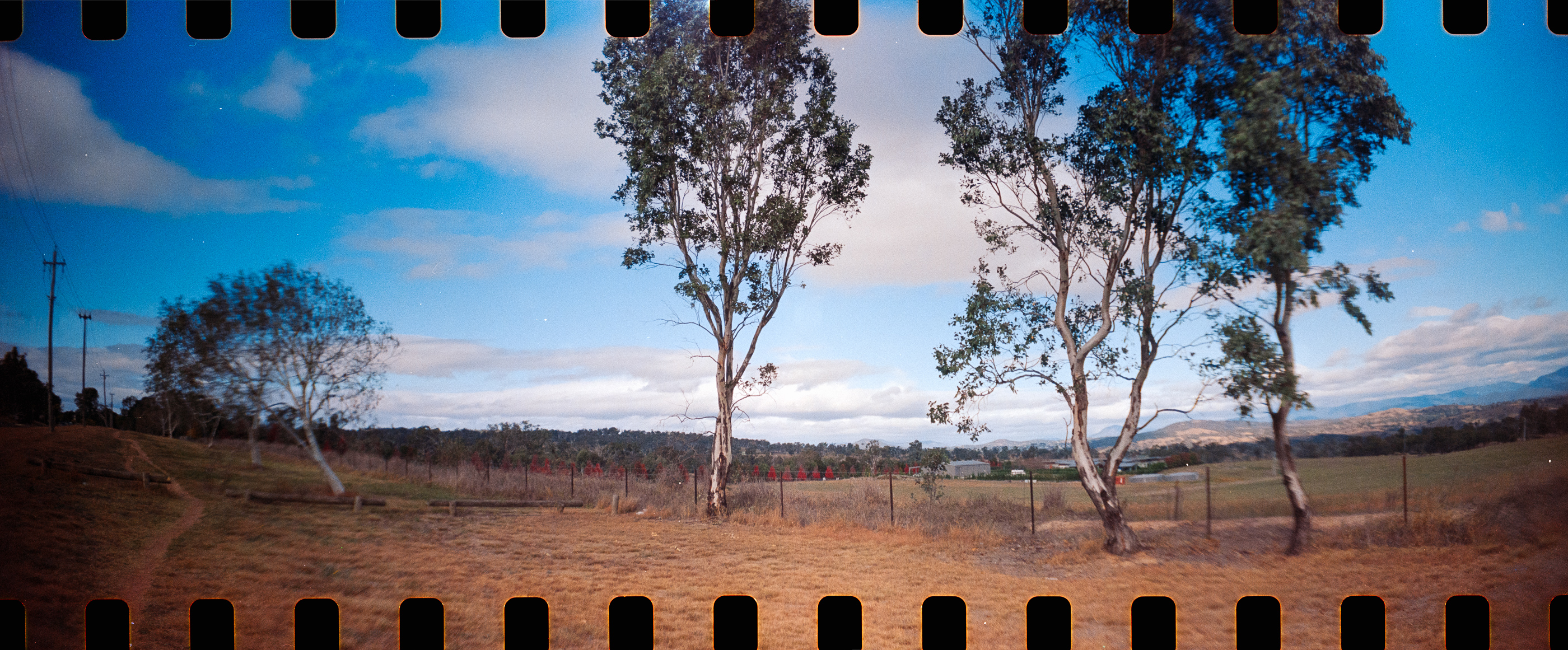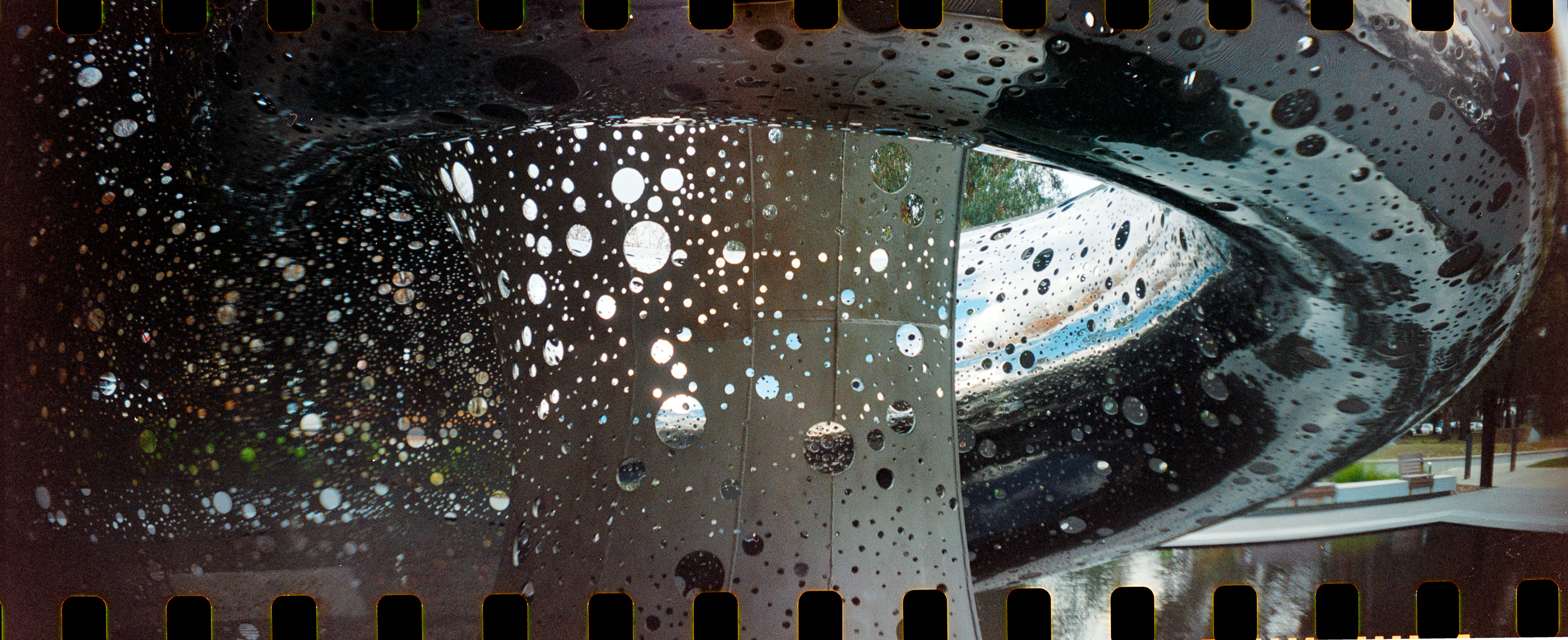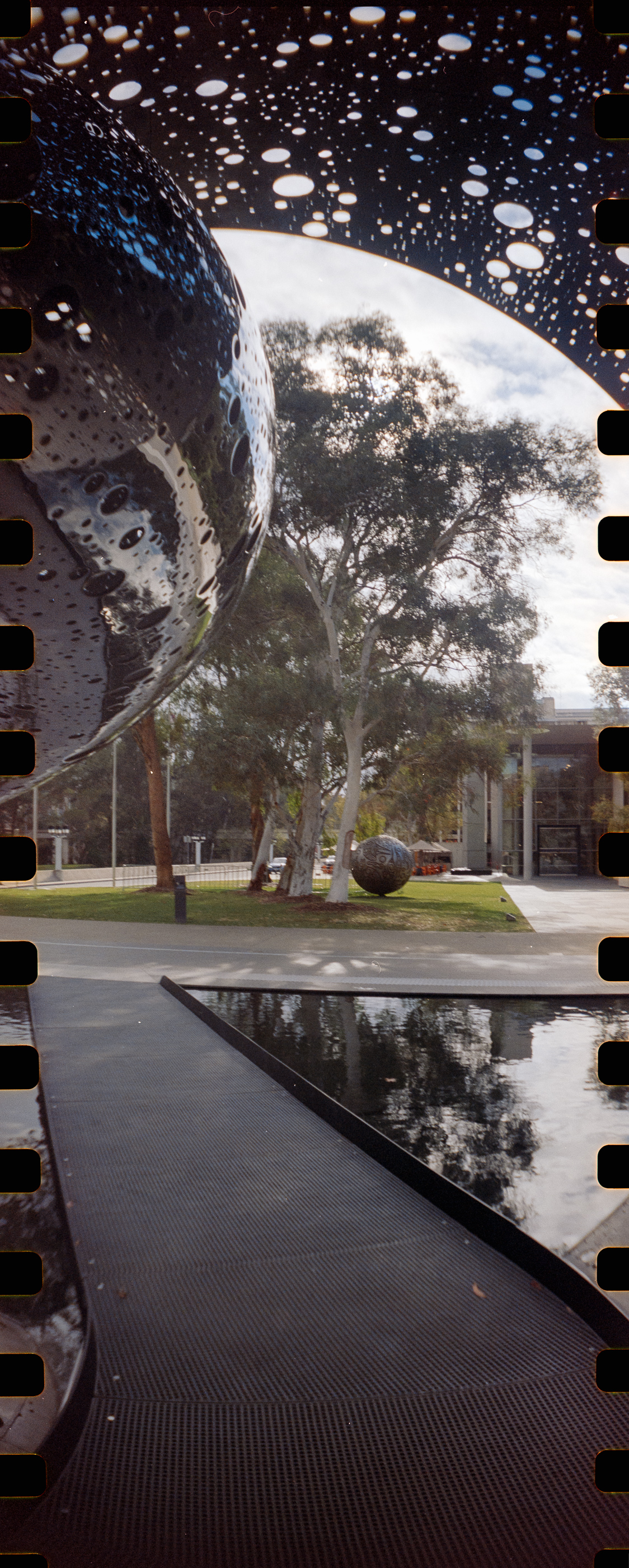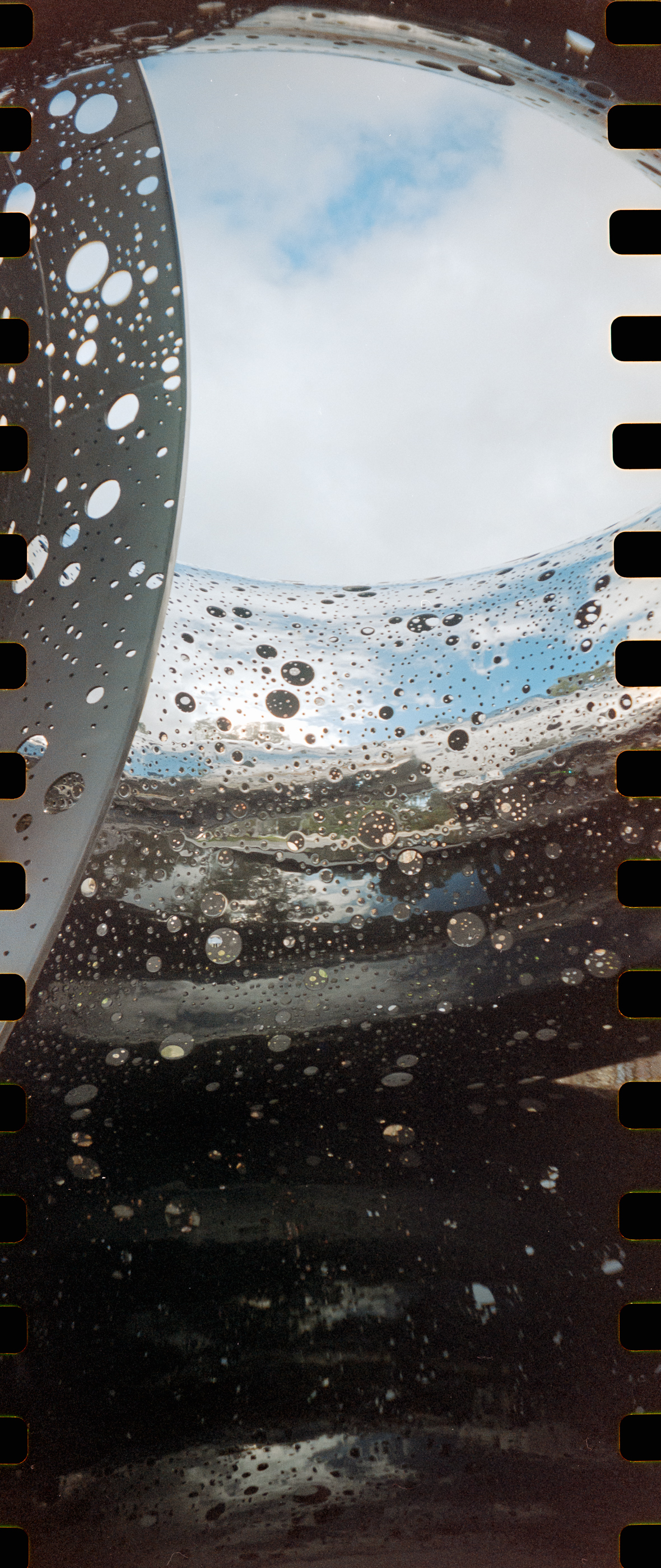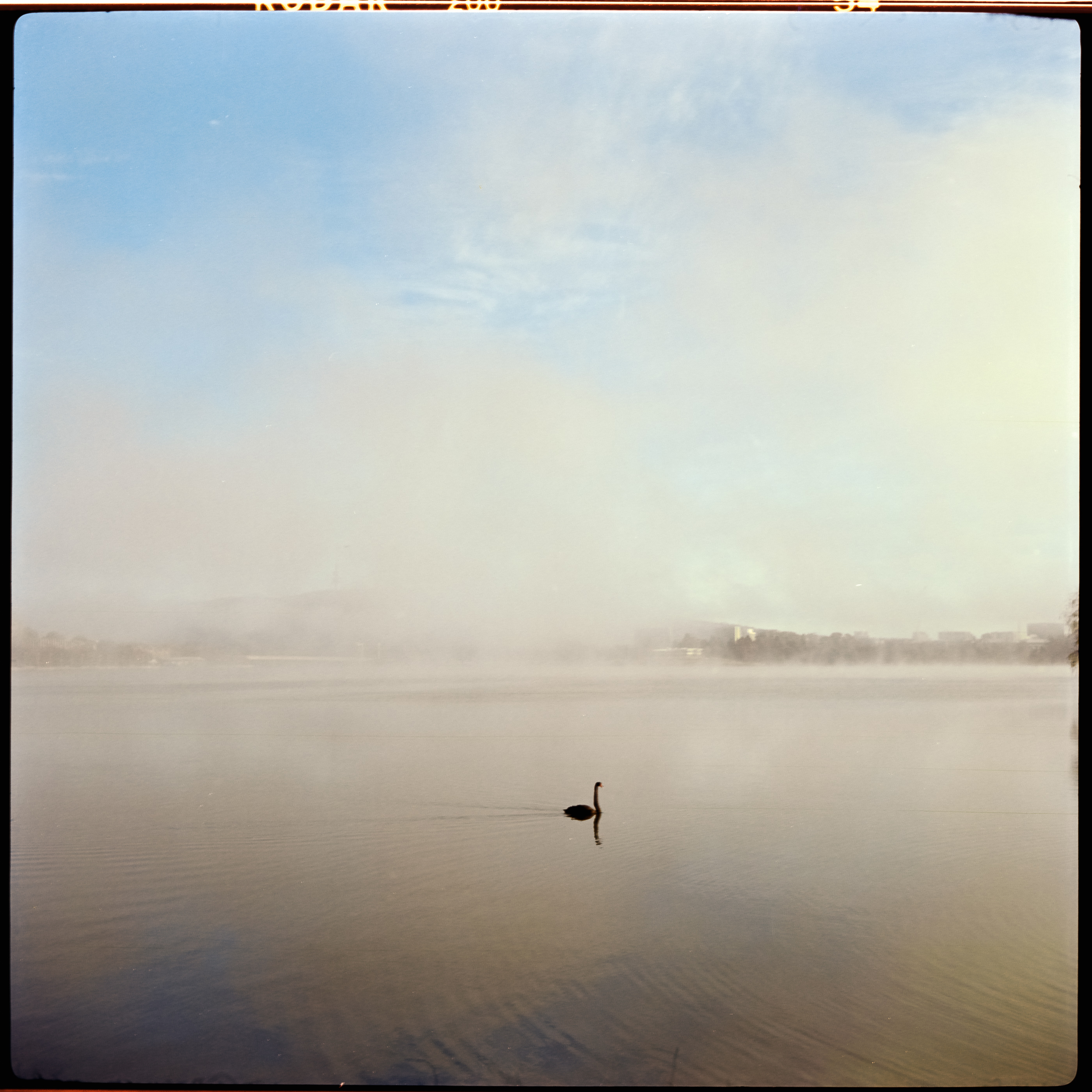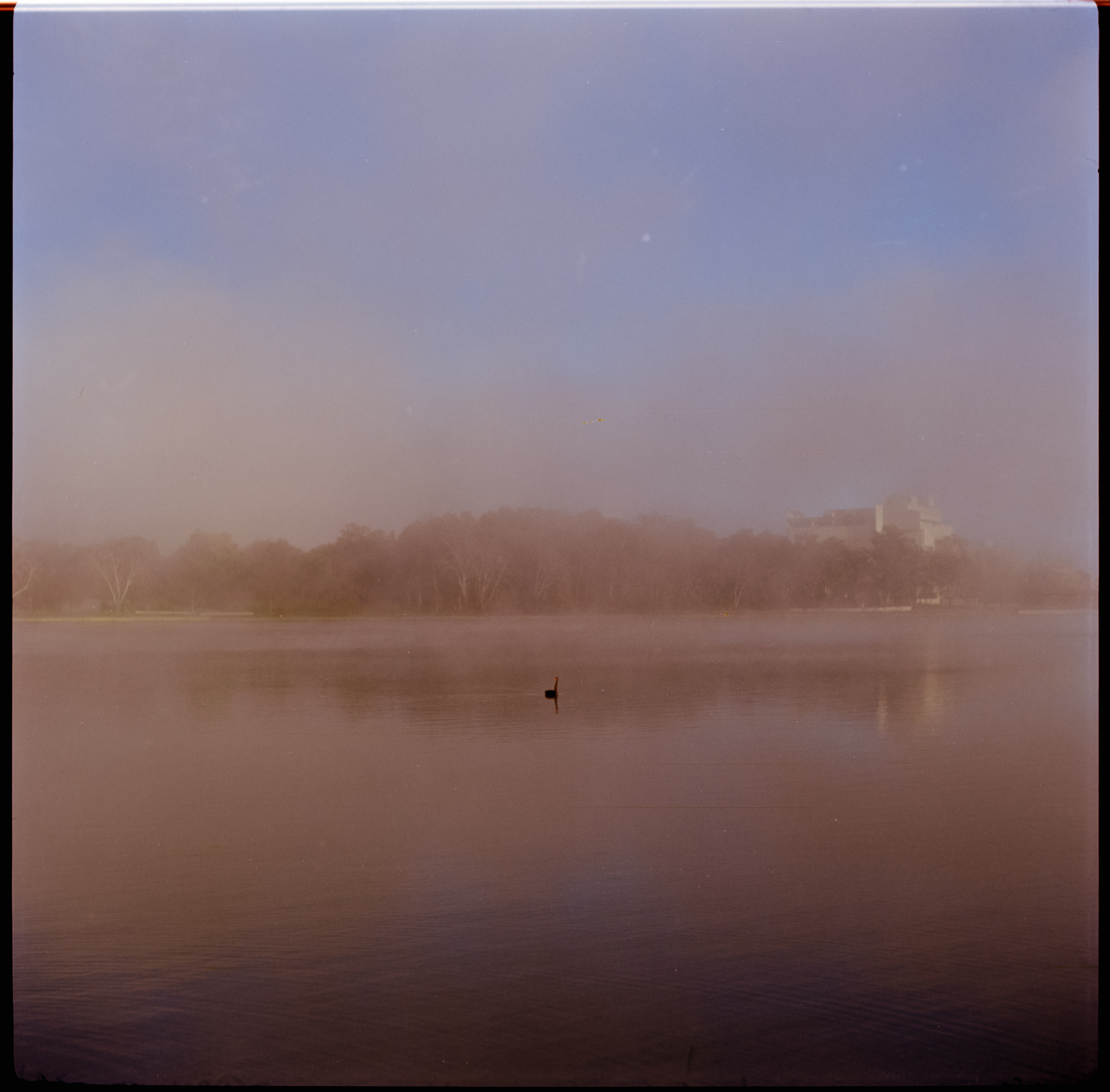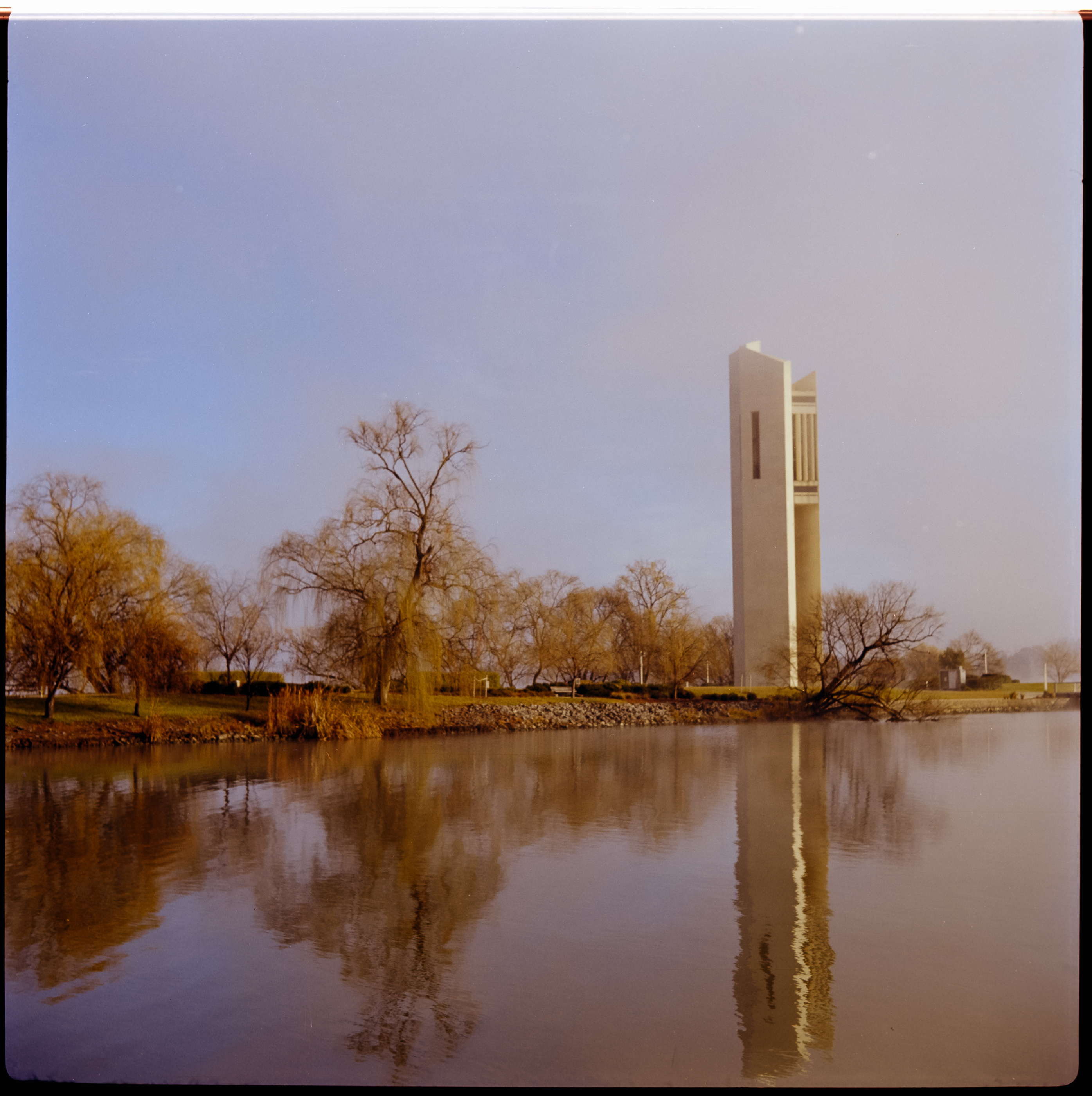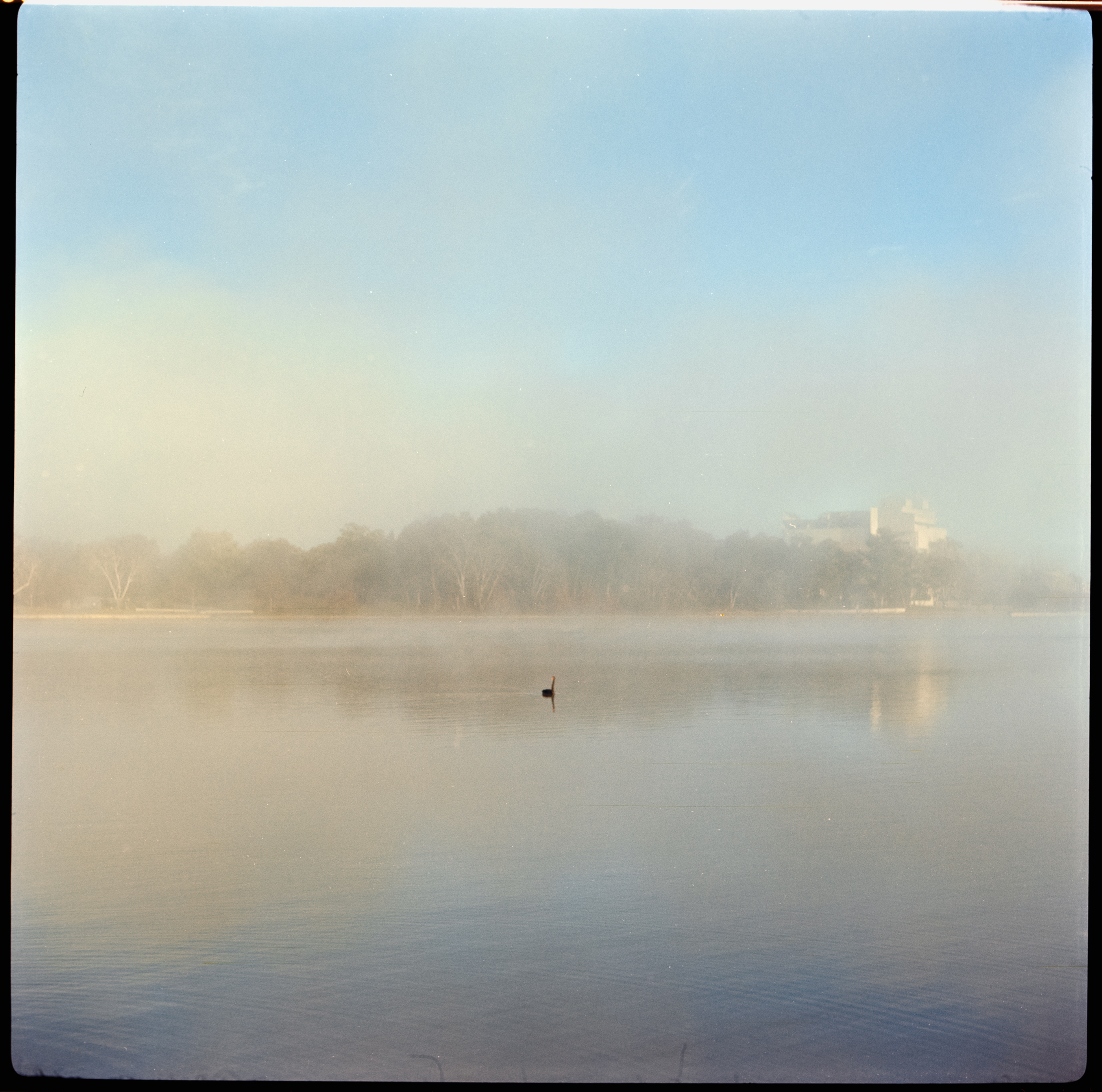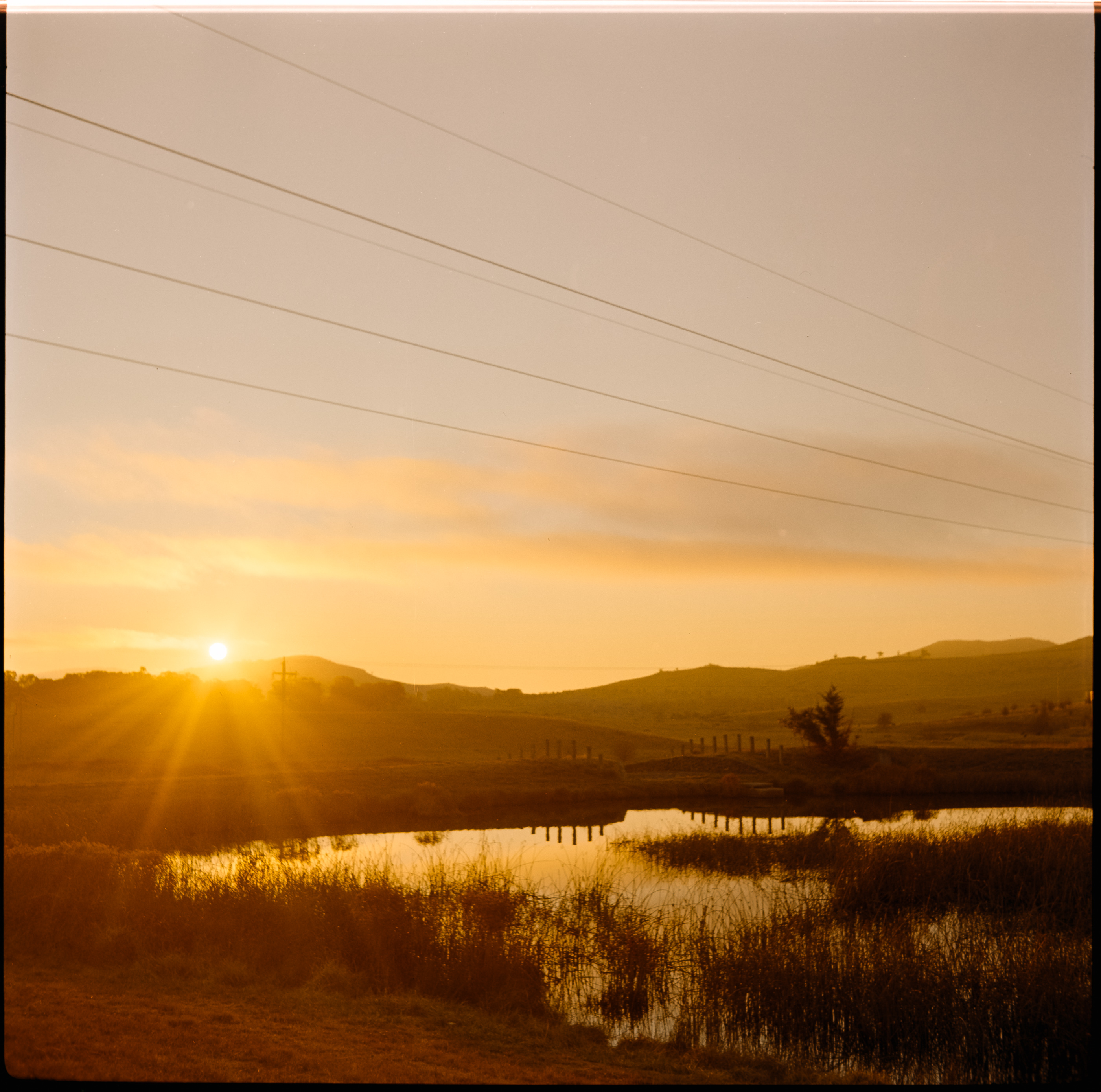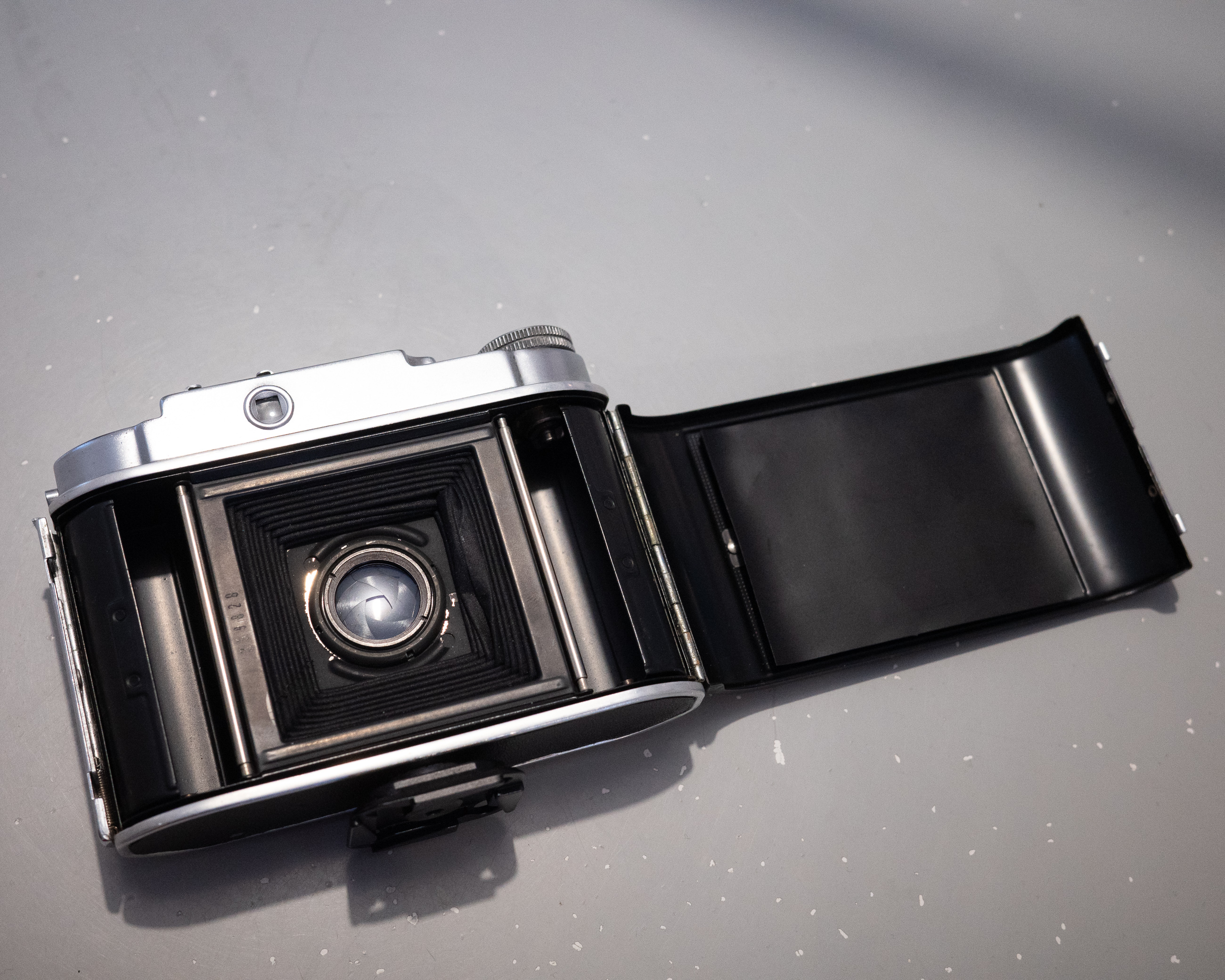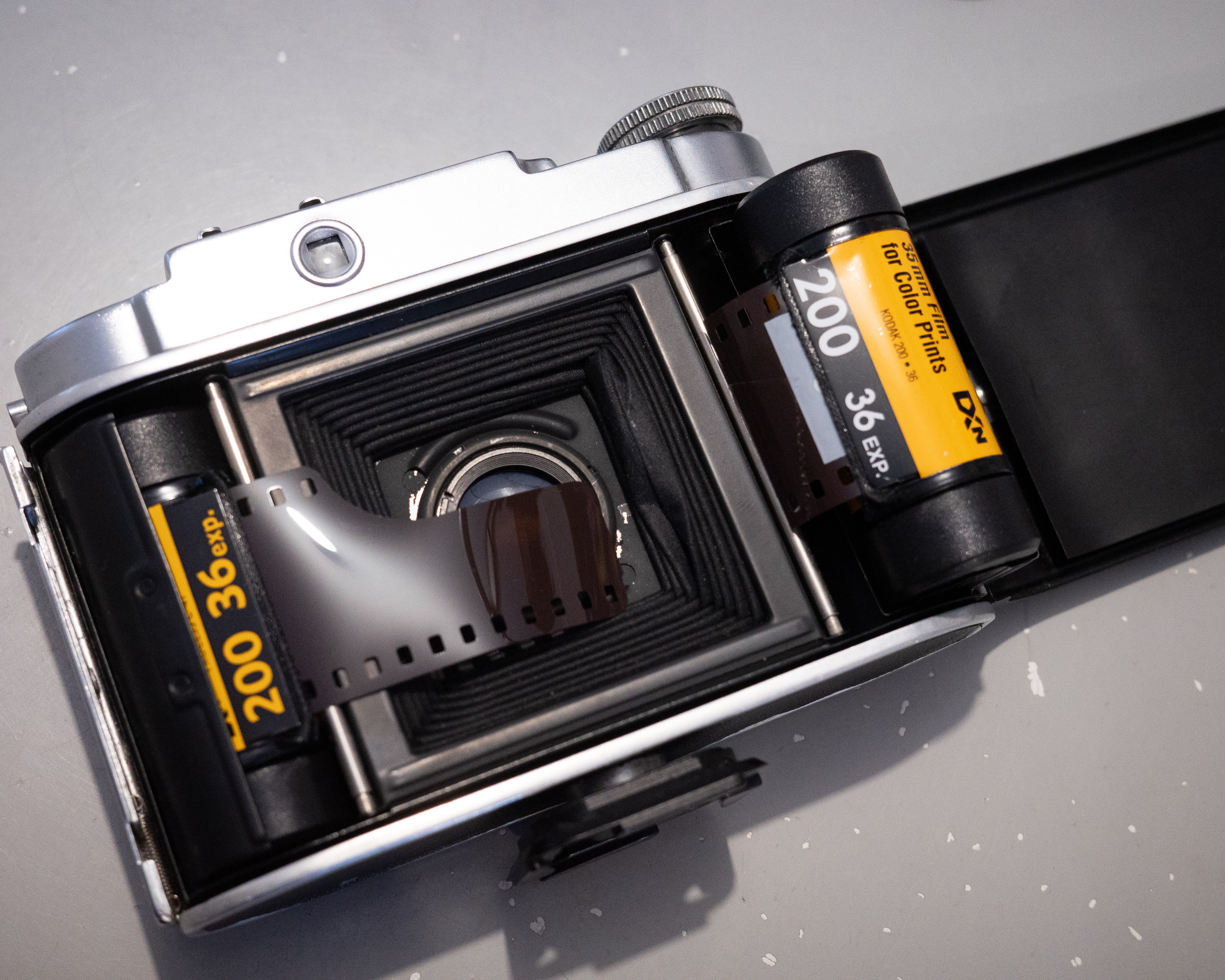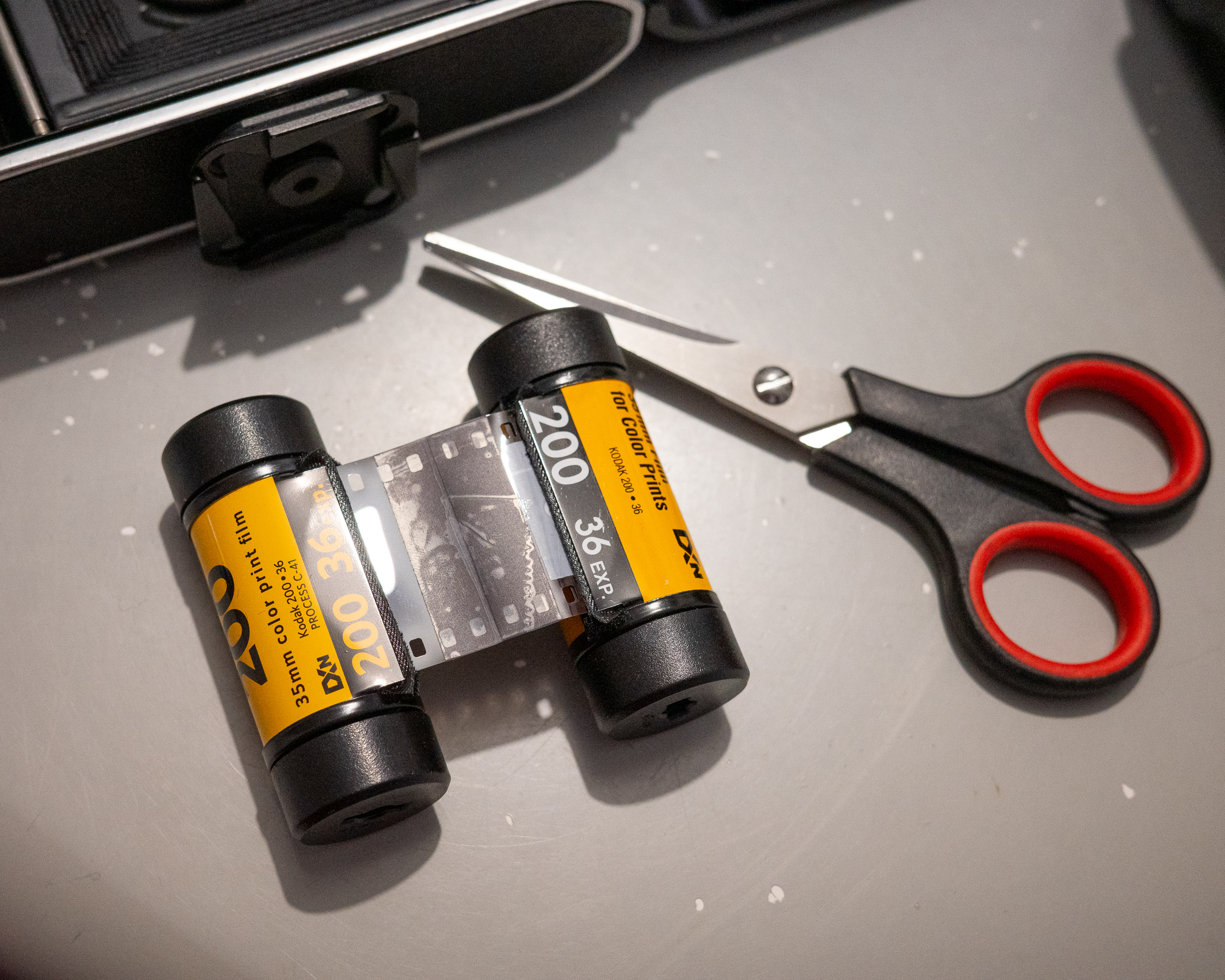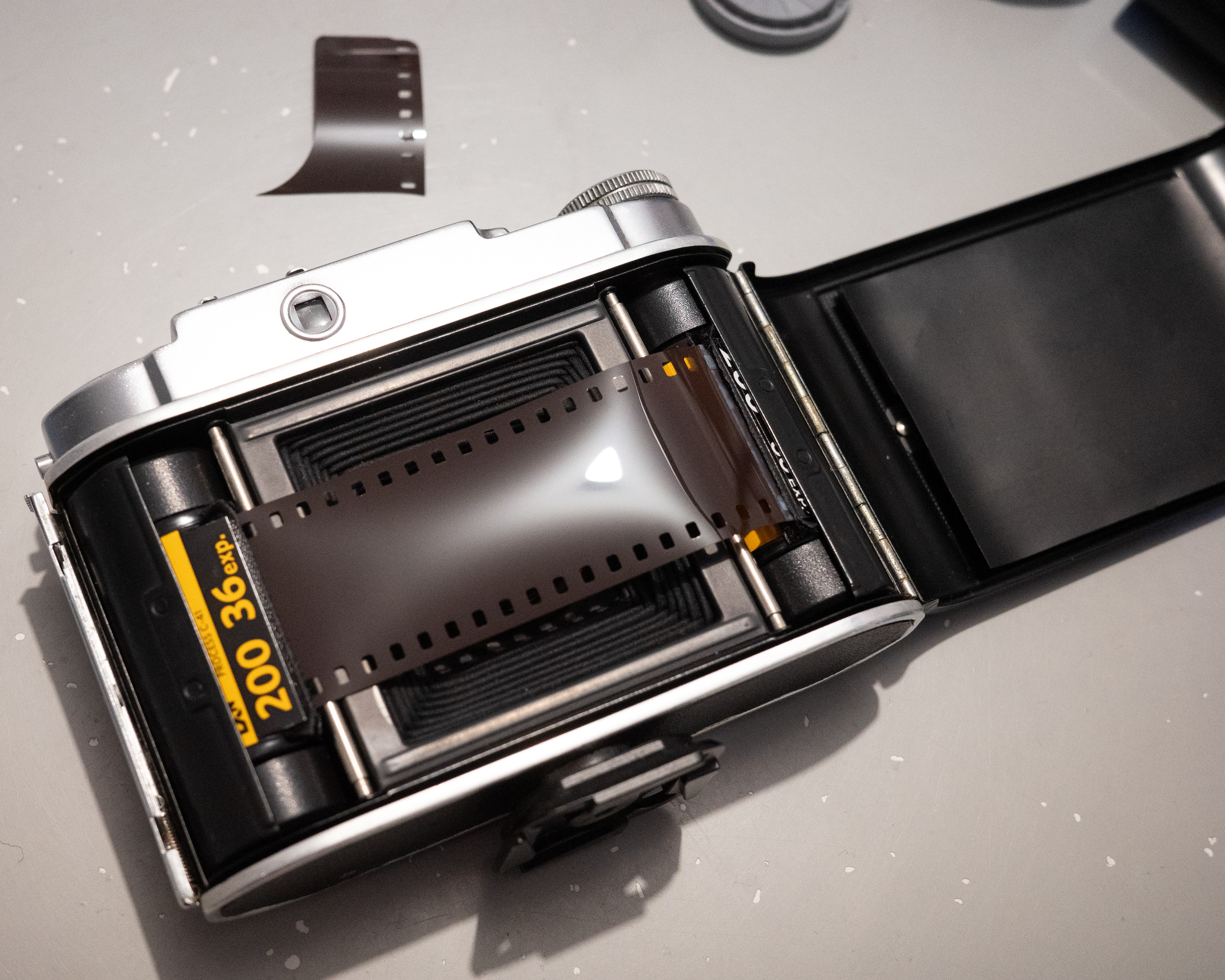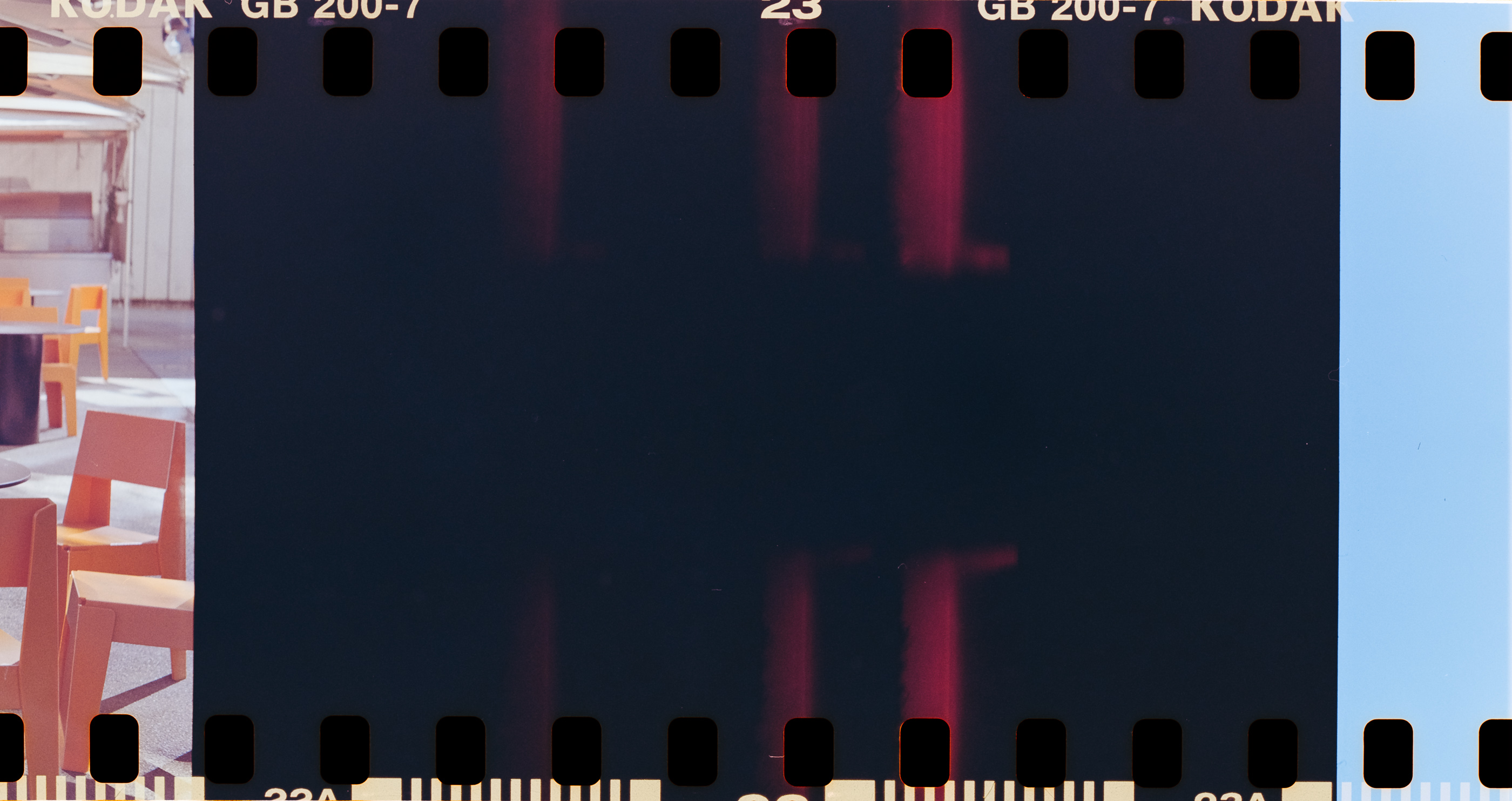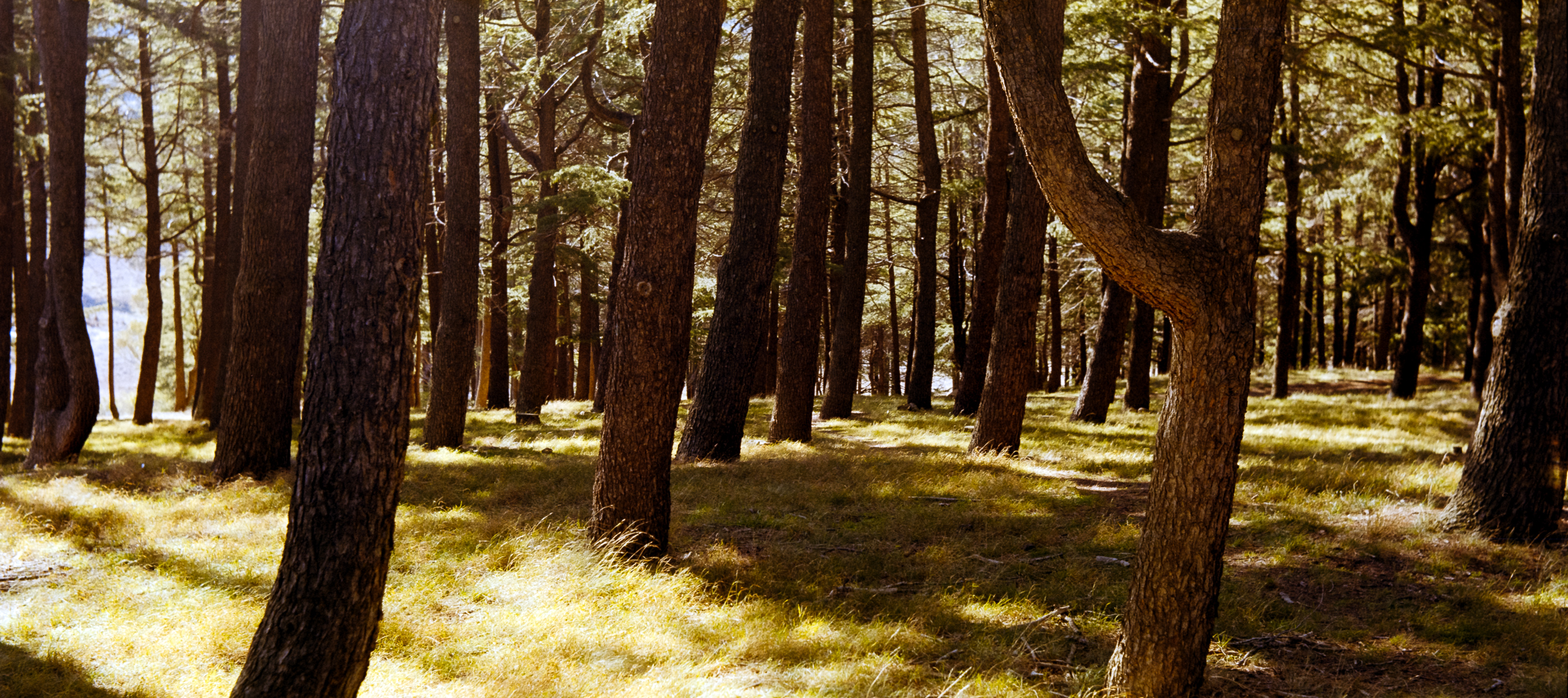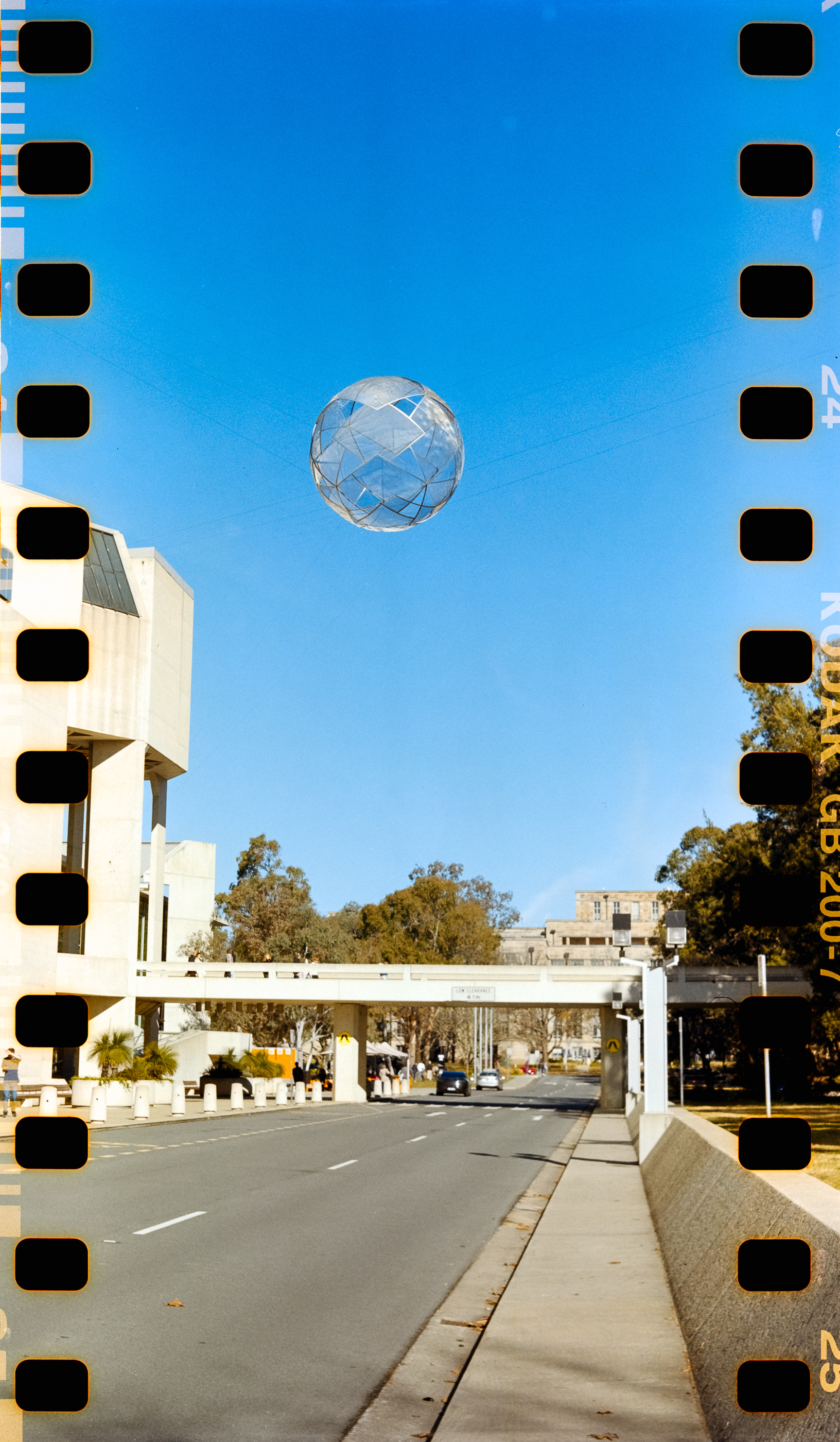Adventures in medium format
A little while ago I got a Lomography Sprocket Rocket on sale. It is extremely plastic, extremely very plastic.
Despite the very plastic lens and the limited exposure control I really enjoy the images from it. None of them are amazing, but they are fun.
But I felt limited by the camera itself. It only has two shutter speed, ~1/100 or bulb, and two apertures, ~f10.8 and ~f16. The lens is also not great. It is plastic, and it has some really smeary bits right on the 1/3 lines. But it is fun.
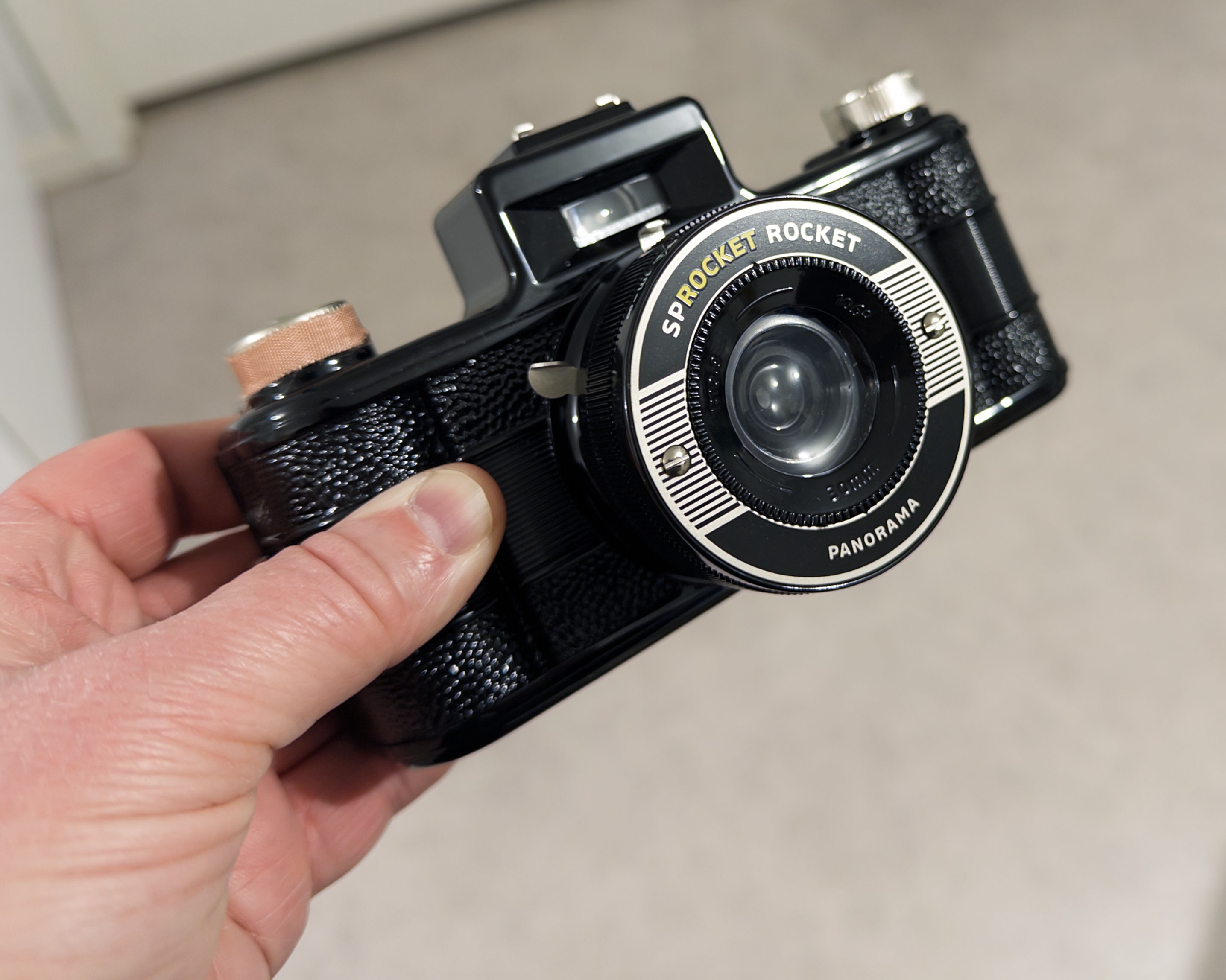 Lomo Sprocket Rocket - all plastic, quite fun
Lomo Sprocket Rocket - all plastic, quite fun
The only issue now is that this led me down a very long a deep rabbit hole on how to (affordably) shoot panoramic photos on 35mm film. The key word there is affordable, as there are a couple of obvious (after much time researching on YouTube) answers. The Hasselblad XPan / Fuji whatever it is. These purpose built cameras are fantastic, and also fantastically expensive. Ranging in price from several thousands to more several thousands if it has been tested and is in good working order. They are of course of the generation of fully electric film cameras, which means they are extremely complicated and prone to breaking if anyone looks at it with too much side eye.
Option two
There are a lot of cameras that are designed to create a larger image circle - medium format cameras. Cameras that use significantly larger film, and produce much larger images. There are a wide variety of formats (645, 6x6, 6x7, 6x9 …) that all use larger 120 film. But most of the (more) affordable options all run the film vertically through the camera, meaning if you do run 35mm film through it all the images would be portrait, or you’d be struggling to compose using a waist-level-finder at a funny angle.
Insert comment here regarding the rise of portrait orientated images based on the influence of social apps, not just vertical videos, but vertical images.
Enter, the folding camera.
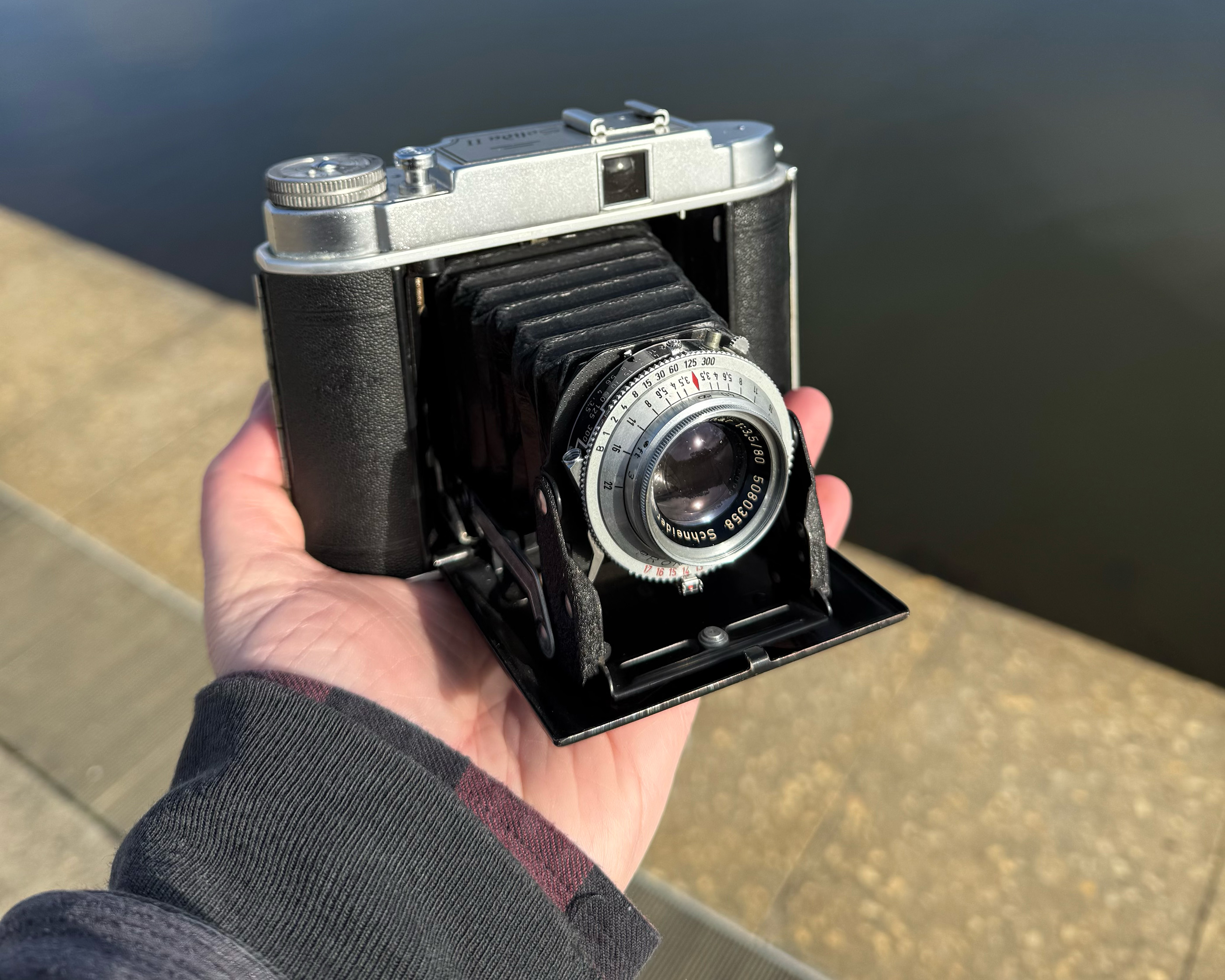 Franka Solida II - a folding medium format camera from around the 1950s - it shoots 6x6 images on 120 film
Franka Solida II - a folding medium format camera from around the 1950s - it shoots 6x6 images on 120 film
I was looking around a local camera store with a good selection of vintage gear when I was visiting Melbourne recently where I spotted a few interesting cameras. This of course lead to more research rabbit holes where I managed to find this Franka Solida II online.
A folding camera with an 80mm lens that shoots 6x6 images on 120 film that most importantly runs the film horizontally through the back of the camera, making it possible to bodge 35mm film into the back of it. But before I do that I could shoot a roll of 120 film, just to see how it goes.
Square Photos
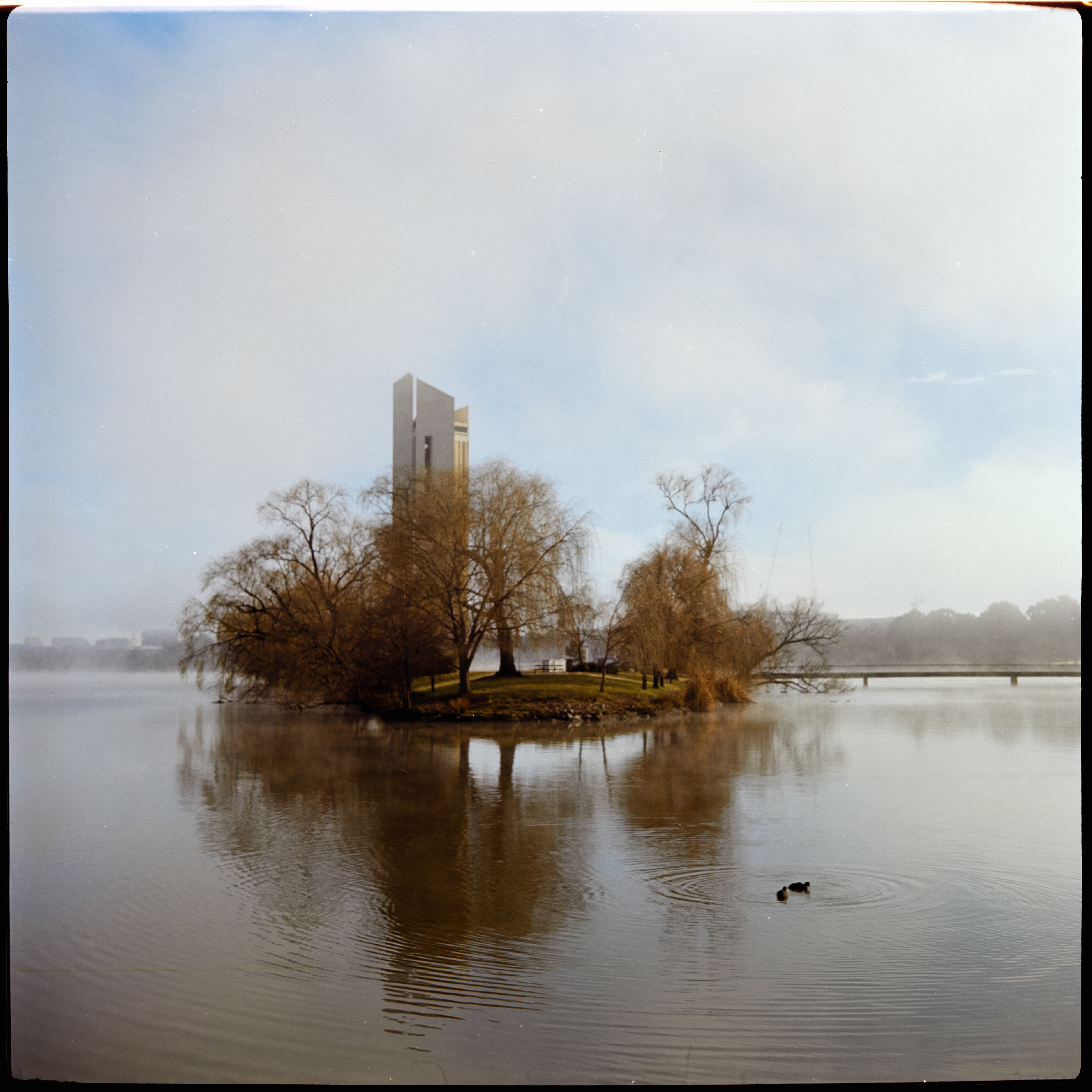 National Carillon - Lake Burely Griffin
National Carillon - Lake Burely Griffin
Oh. Turns out I really really like this photo.
When I first converted the negative in Lightroom I was a little disappointed that the Carillon wasn’t as sharp as I had hoped for, but then I could see the ducks and the ripples in the water were quite sharp (more on that later), I love the colours. The depth of field also moved the subject to the ducks in the water.
The foggy morning was just fantastic for taking photos down at the lake.
Remember when there were ONLY square photos on Instagram? Everything old is new again, or at least it was 15 years ago
Panoramas
But, what I wanted to do was shoot panoramic images on (cheaper and more accessible) 35mm film. There are a few ways of doing this, but the easiest for me was to get some little plugs to fit the 35mm canister into the camera. In terms of the take up spool, I chose to wind the film into a second canister - meaning if I did open the back of the camera exposed film would be safe - 120 film has light-proof backing paper.
In an effort to try and make sure the 35mm film ran flat and was protected from any light leaks from the frame window on the back of the camera I affixed a piece of backing paper to the pressure plate.
The film advance winder is just a knob - very similar to the Sprocket Rocket. When using 120 film with backing paper there is a little window on the back to watch for the frame numbers when advancing the film, of course this won’t work with 35mm film. Before putting in fresh film I used some dead film and marked where I though the exposures would be on the back, winding the film on. Somewhere between 1.5 turns and 2 turns seemed to be about right.
In reality I think it was closer to 2 full turns at the start of the roll, and maybe 1.25 turns near the end of the roll. There was some overlap near the start, and by the end large gaps between the frames.
I am happy I avoided light leaks on any of the frames, still not sure where the ones between some of the frames came from.
Rectangle Photos
(Relatively) early one Saturday I set out with a few cameras (I also wanted to finish the last few frames on a roll of Japan export Fujicolor).
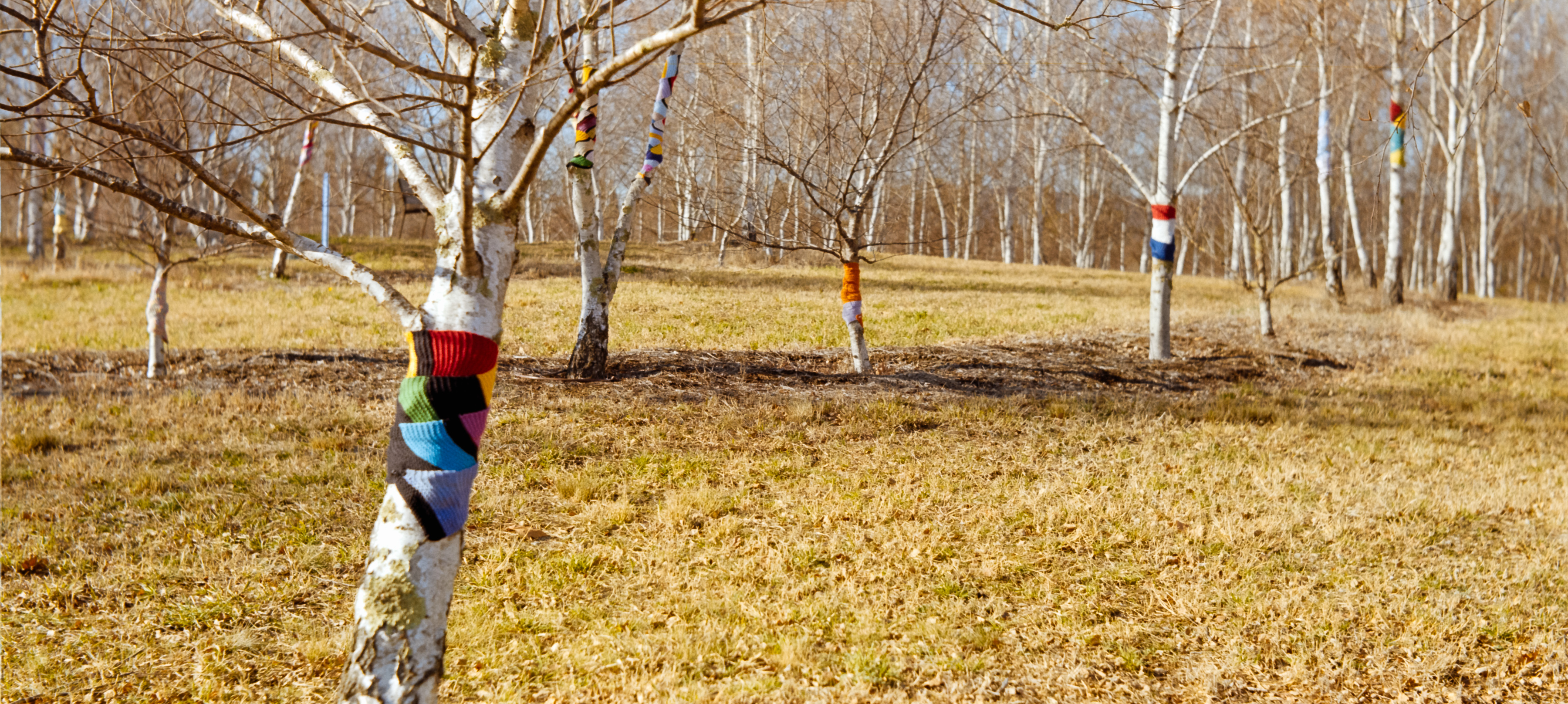 Trees at the arboretum - f11, 1/125
Trees at the arboretum - f11, 1/125
It was after this photo when I was lining up the next shot and checking the focus that I realised that that the distance markings on the lens were in fact in feet and not in metres. Most of the focus has been done using the hyper focal distance - I hate / am not good at zone focusing, and that is the only option with this camera - but calculating the hyper focal distance in metres and then setting it in feet, I am shocked any of the photos were in focus, but it does explain the soft background with the ducks on the 120 film.
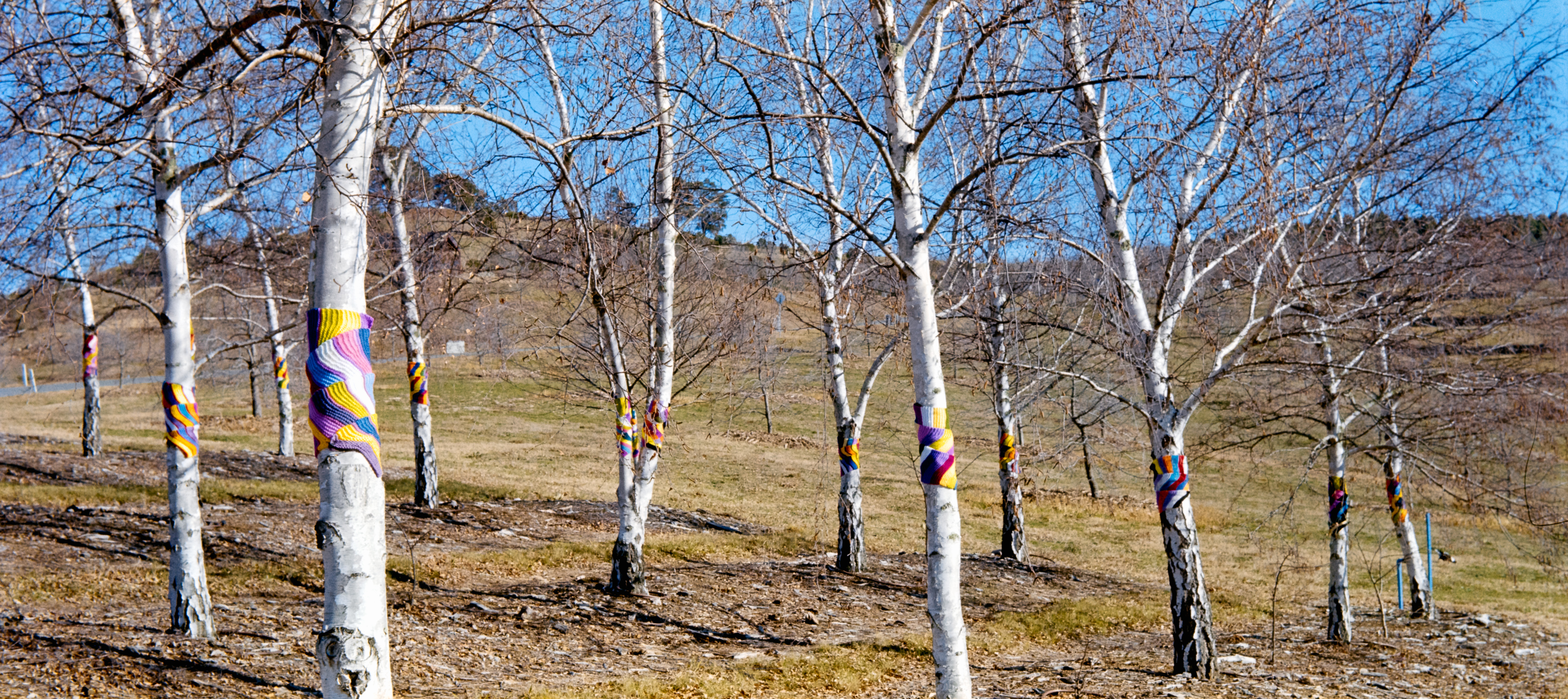 Trees at the arboretum - f11, 1/125
Trees at the arboretum - f11, 1/125
I then moved location to the cedar pines and setup the tripod.
This is one of the favourites from the morning. This was the second shot in the location. The first one I took a meter reading and was worried about it being to dark, and there was that bright spot of light on the left - f11, 1/8. I started to pack up and then thought no, I should take another, and shoot something closer to the “correct” exposure, and let the dark bits be dark - f11, 1/30.
Two full stops darker. Is this me learning? Letting shadows be shadows?
A feature of this camera is the shutter button on the camera body has a multiple exposure lock out, that only lets you trigger the shutter again after you have wound the film on - it doesn’t know how much you wound it on, but turn it enough and it will release the shutter lock. The shutter also needs to be manually cocked for each photo as well. You’d thing between these two things it would be pretty hard to stuff up and do a double exposure. You’d think. However, if you use a shutter release cable connected directly to the lens it bypasses the the lockout on the camera body 🤣
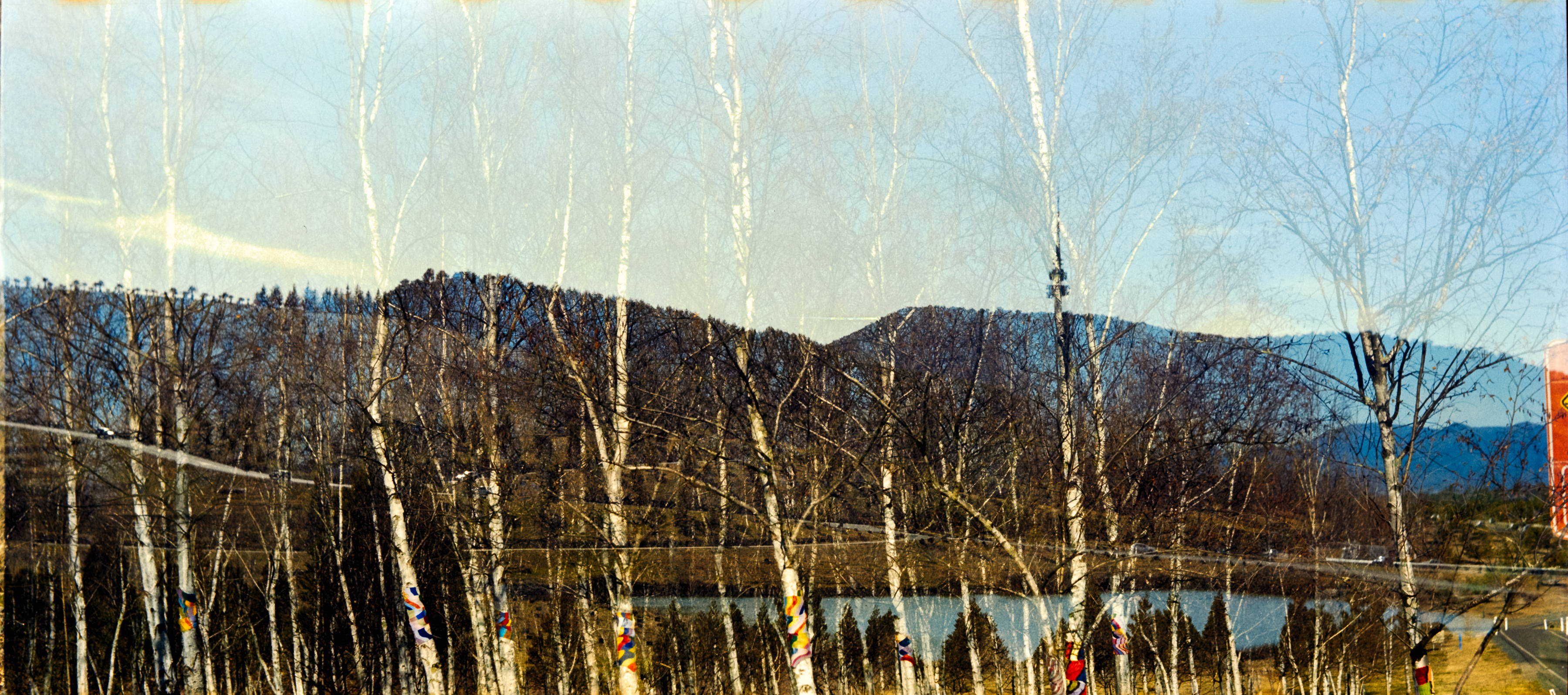 Trees at the arboretum with bonus Telstra Tower
Trees at the arboretum with bonus Telstra Tower
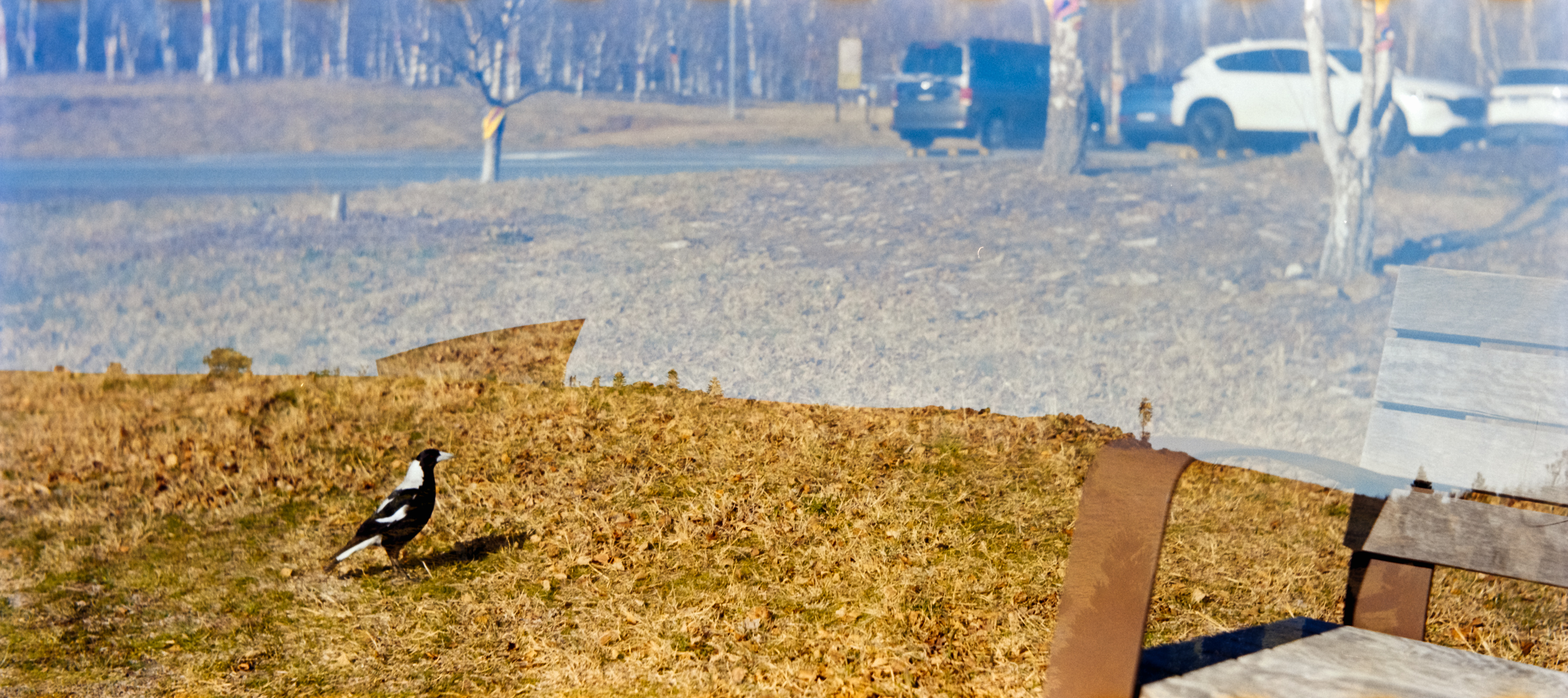 Continuing the tradition of getting magpies on film
Continuing the tradition of getting magpies on film
I’m a bit annoyed I stuffed up the magpie and the skyline - I think both images would have worked out quite well.
Packing up I heading into Parkes for the Gallery and the Lake.
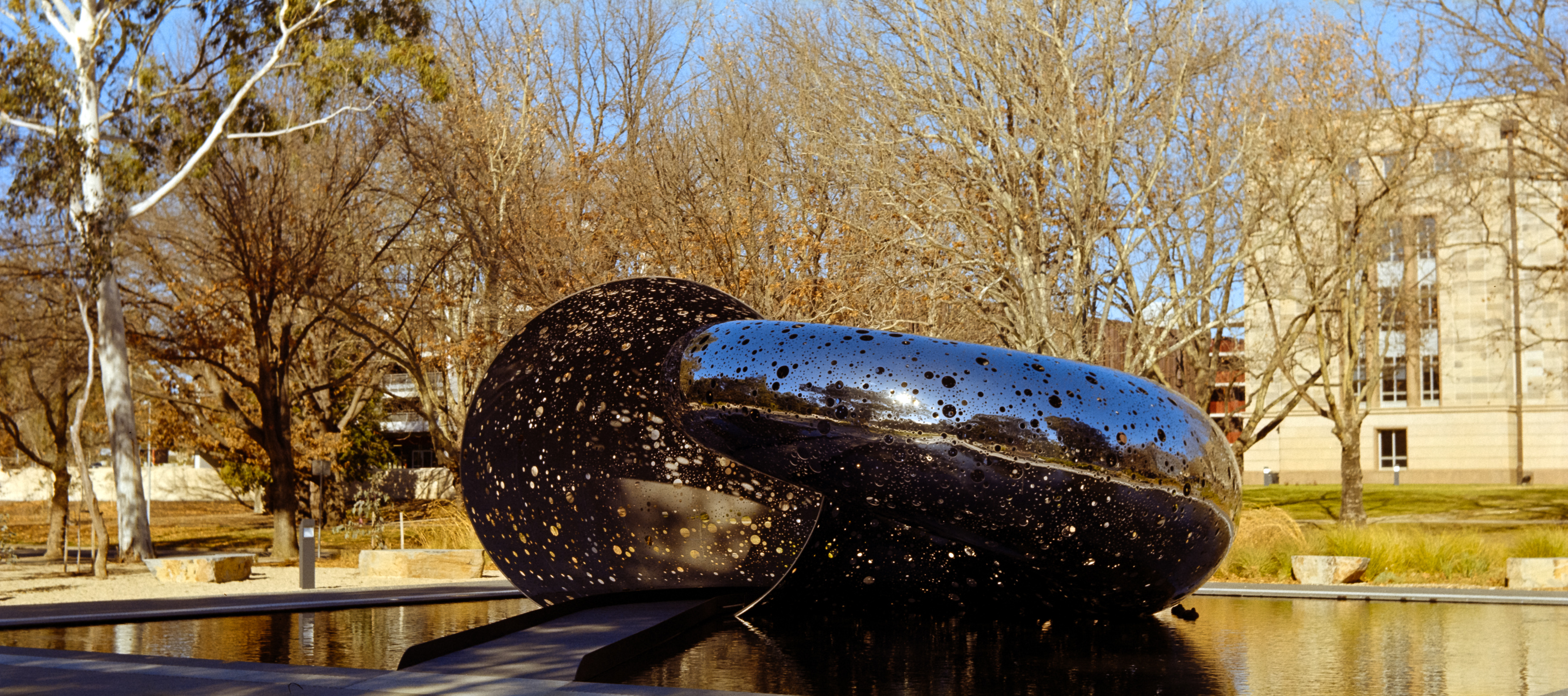 Ouroboros by Lindy Lee at The National Gallery of Australia - f11, 1/125
Ouroboros by Lindy Lee at The National Gallery of Australia - f11, 1/125
Pleased this one turned out. The 80mm lens with 35mm film is quite long. This might be the biggest difference with the Sprocket Rocket which has something akin to a 30mm lens. Composing can be a bit tricky. I taped some plastic to the front of the view finder where I thought the 35mm film would be, but that didn’t turn out to be terribly accurate. Next roll I know I need to move everything up in the frame.
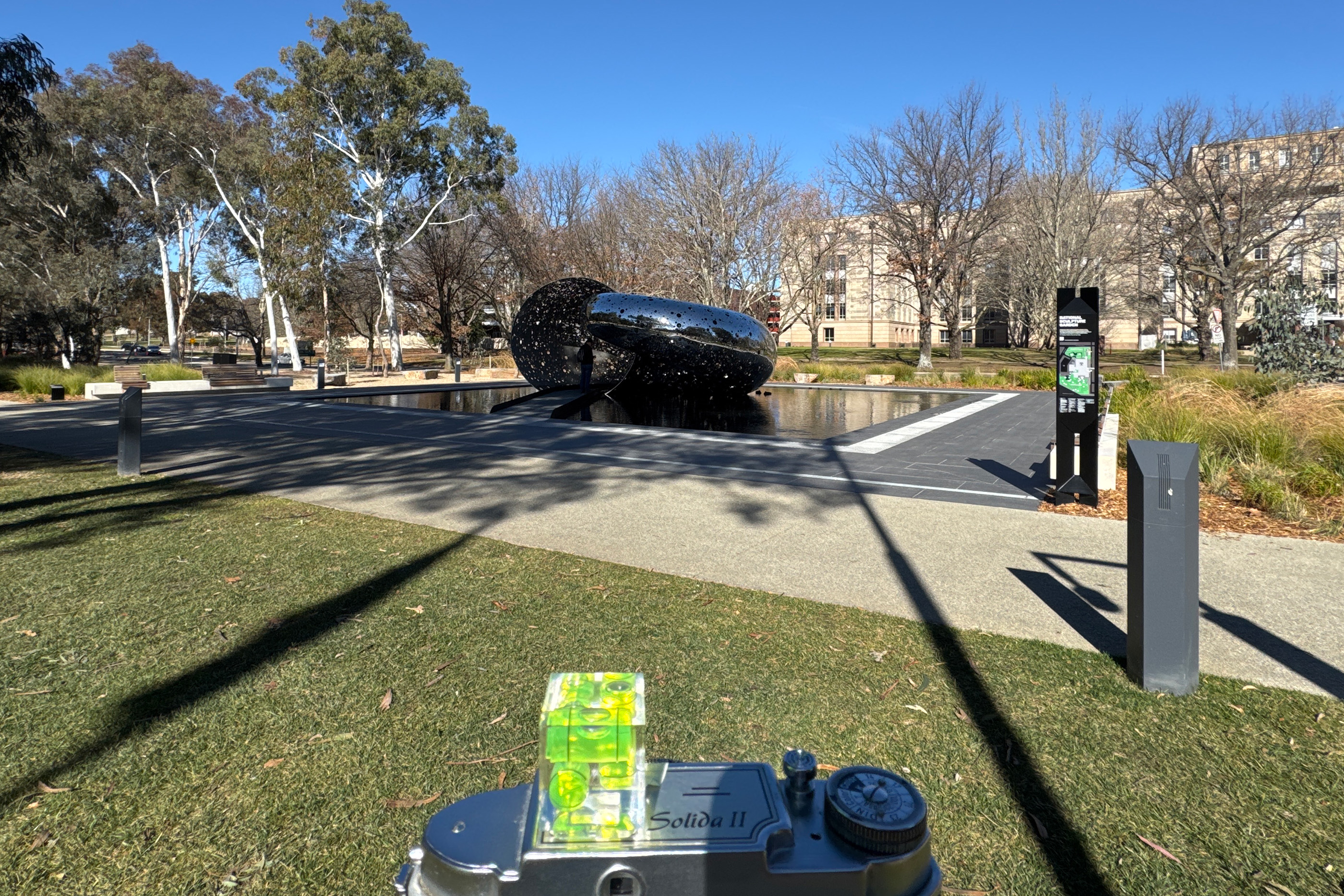 Ouroboros by Lindy Lee at The National Gallery of Australia
Ouroboros by Lindy Lee at The National Gallery of Australia
My goal was to compose the images within the main part of the film, and not rely on the full height of the film, as cool as sprockets can look.
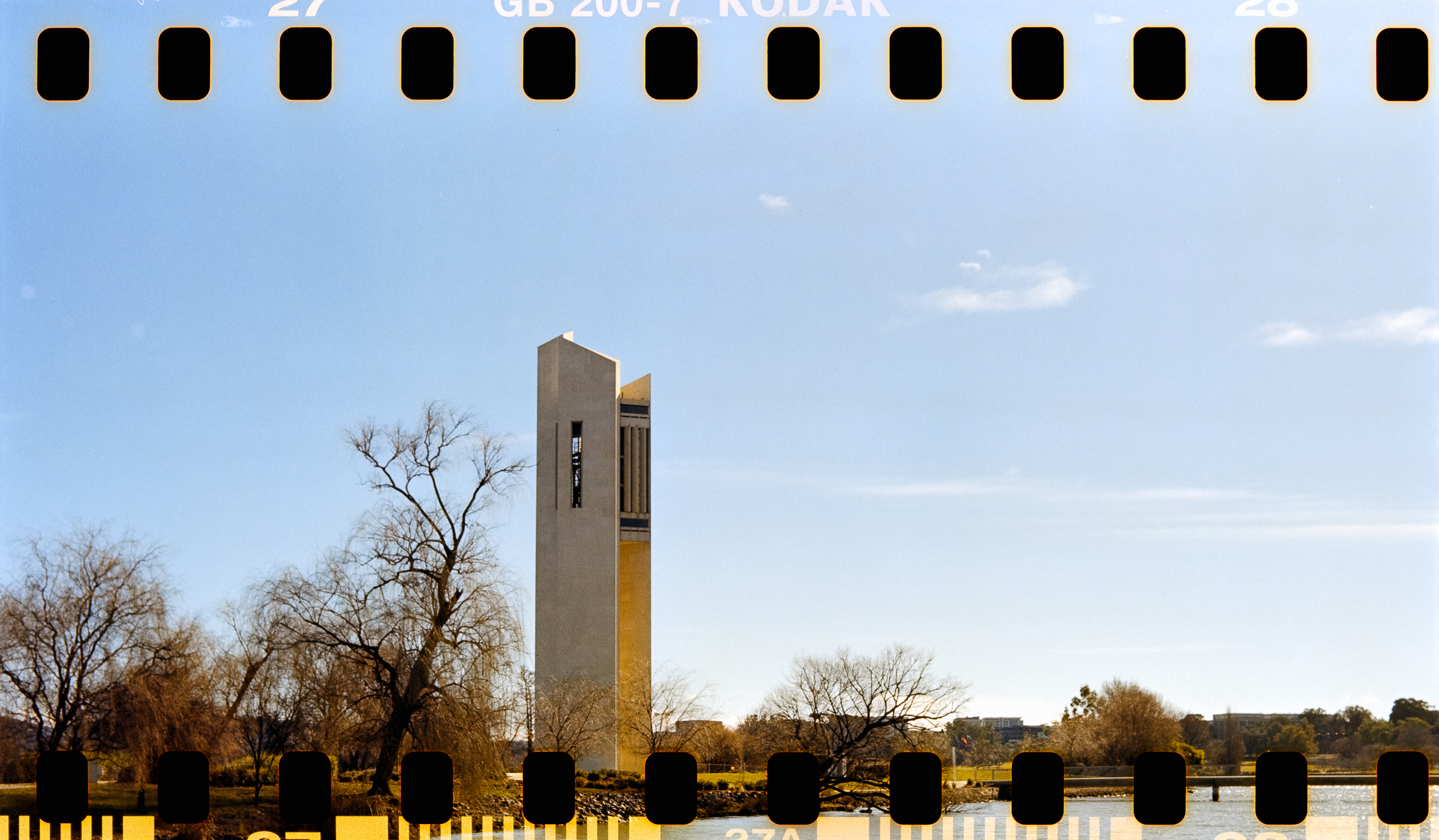 Nation Carillon - Lake Burely Griffin - f11, 1/125
Nation Carillon - Lake Burely Griffin - f11, 1/125
Scanning
Scanning the panoramic images can be a little challenging. I scan my 35mm film with my OM Systems OM-1 with a Valoi easy35 - it screws directly onto the front of the lens on the camera, eliminating any stray light and helping assure alignment. While the goal is never to get the ‘biggest’ or ‘best’ file at the end, I do use the high-res mode to get a good starting point that gives me the most information to work with when editing. It is possible to get two images of the panoramic frames and stitch them together (I did this for the Sprocket Rocket shots), this time I opted to take take a single image of the full frame and using a light panel and tripod. I start with a ‘lower resolution’ image, but it is still plenty good enough for me and what I am doing with the images.


Processing the images in Lightroom with Negative Lab Pro I also learnt something new. If you convert the negative with the sprocket holes included it confuses all the algorithms and looks terrible, cropping in and then un-cropping (if you want the sprocket holes) yields significantly better results - I might need to revisit some of my early photos on the Sprocket Rocket.
What did I learn from this?
I do like the panoramic images. I enjoy looking for scenes that work in the wide aspect ratio. It helps me focus on fewer subjects in a scene. The fact that I can’t get the full height of a tree in the image means I don’t think about trying to get the full height of a tree in the image and I focus on what I am actually trying to capture.
Will I shoot more panoramic photos using the 70 year-old folding camera?
Absolutely. The tight 80mm lens is limiting, but if it was super wide I wouldn’t get close enough to the subjects and would probably rely too much on the ‘whacky’ look, I think this is a good limitation for me. The other issue is folding cameras like this don’t tend to have very wide lenses. A medium format camera with interchangeable lenses is significantly more money. There are some specially built film backs for some that take 35mm film, but just the film backs are around $1000, ten times what I paid for my camera.
